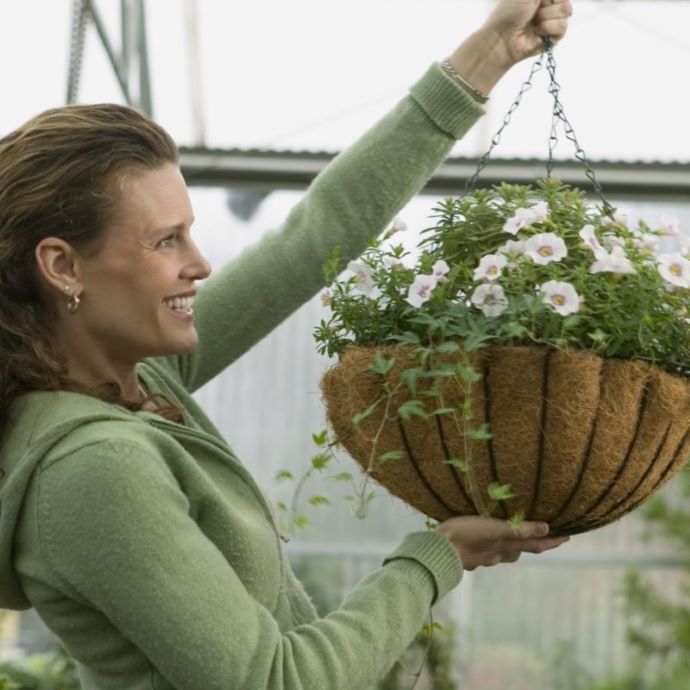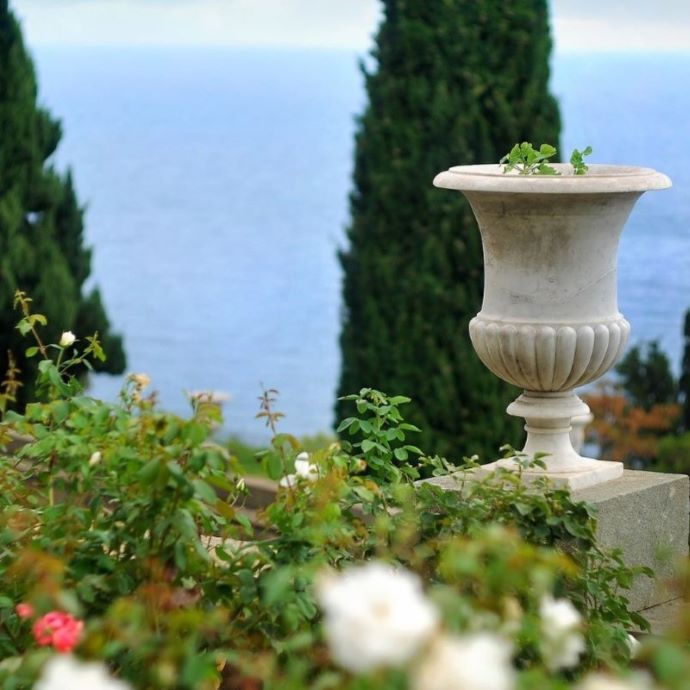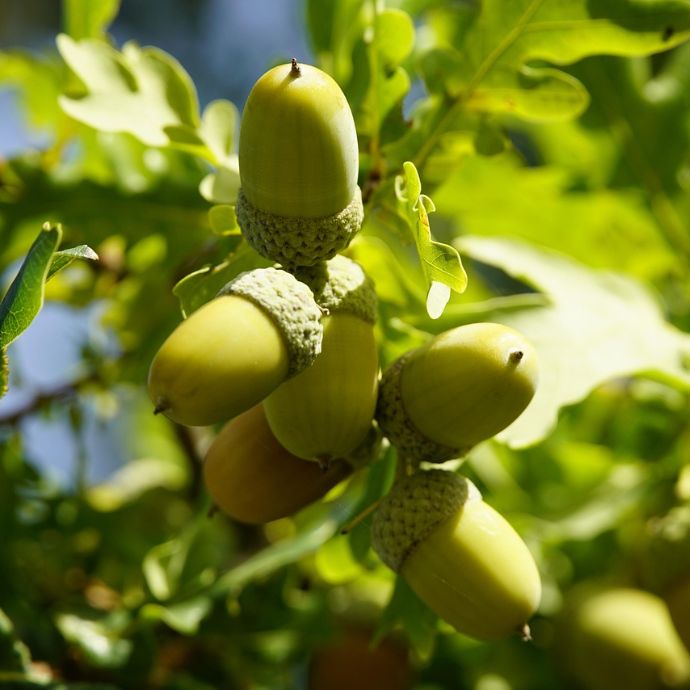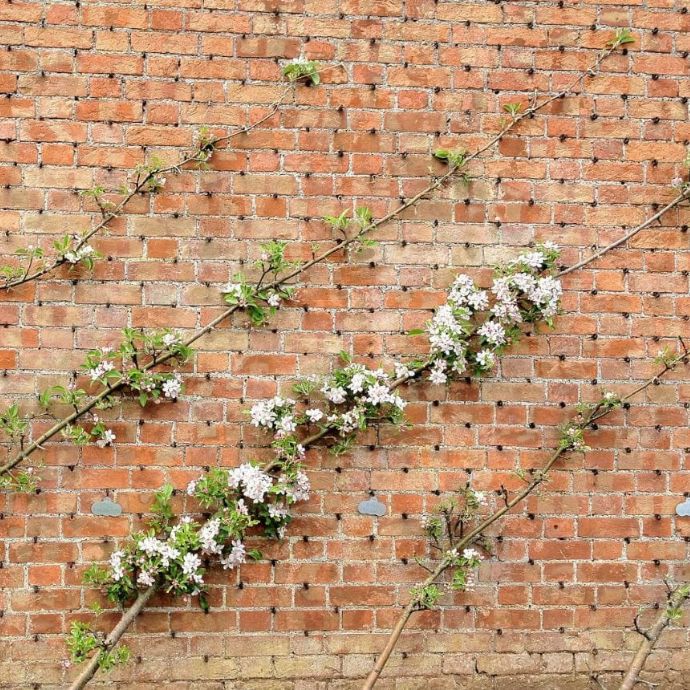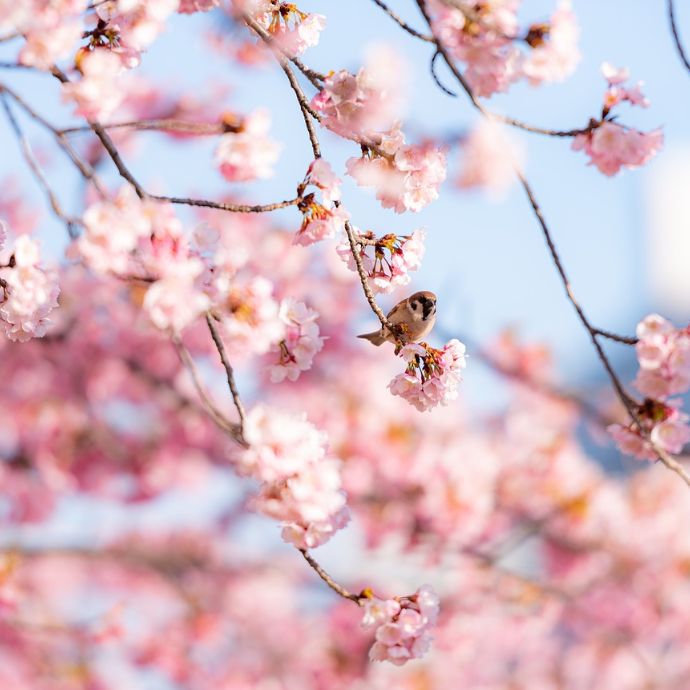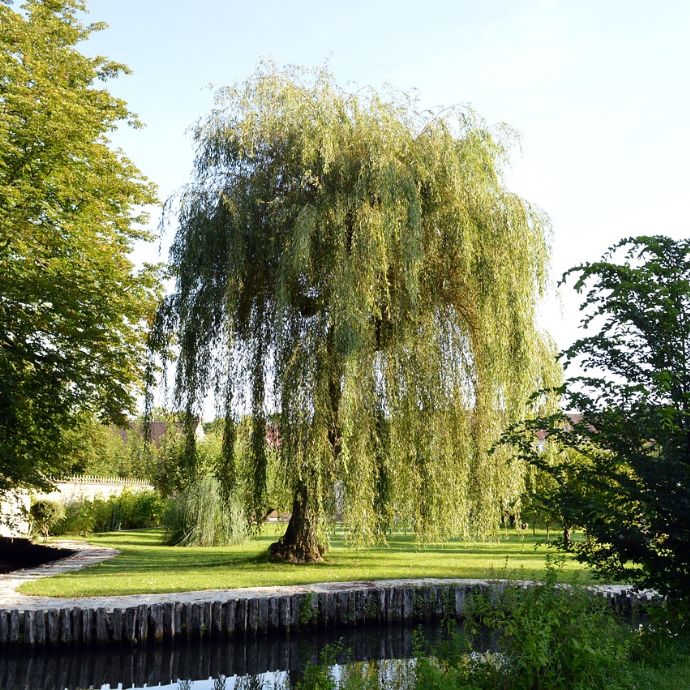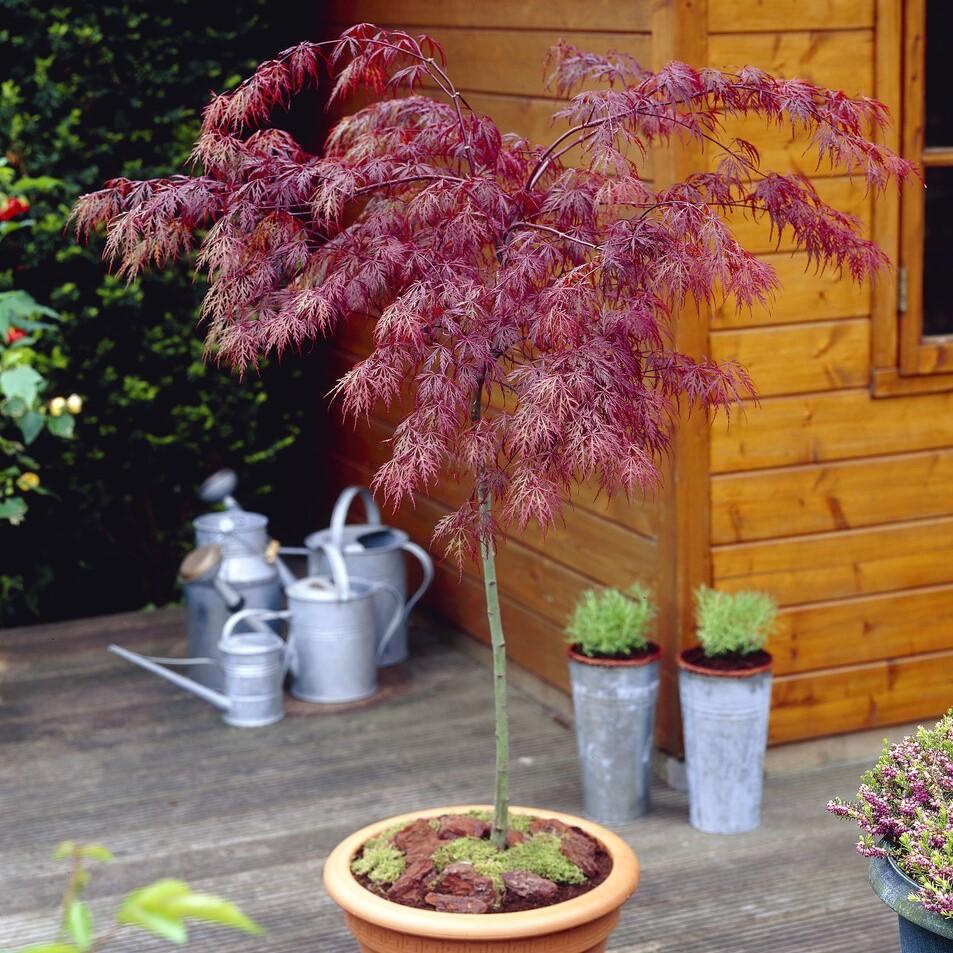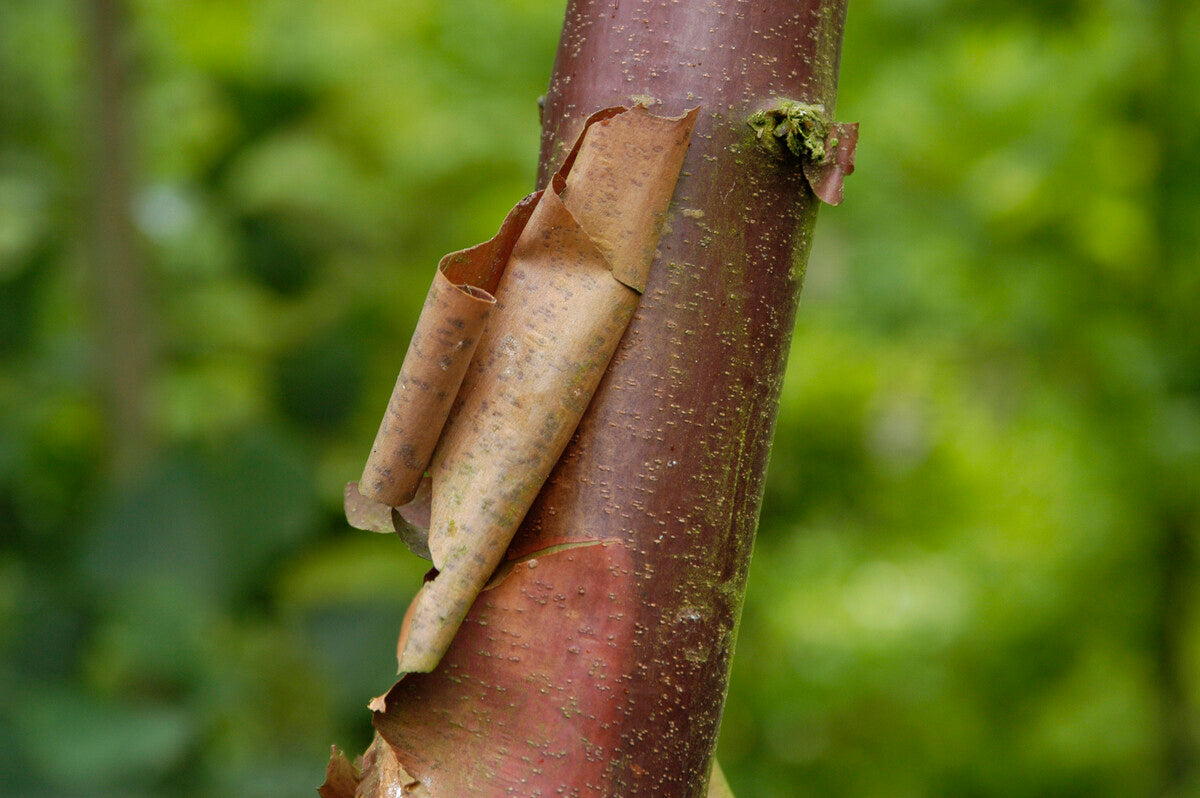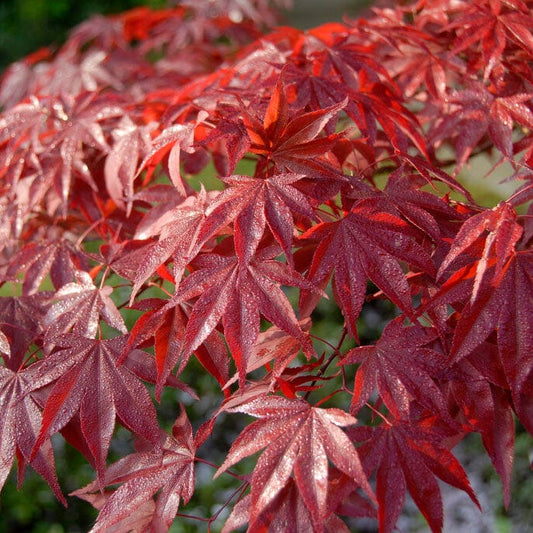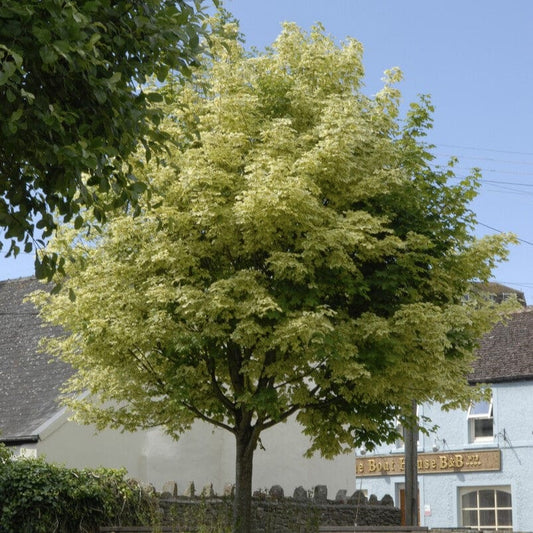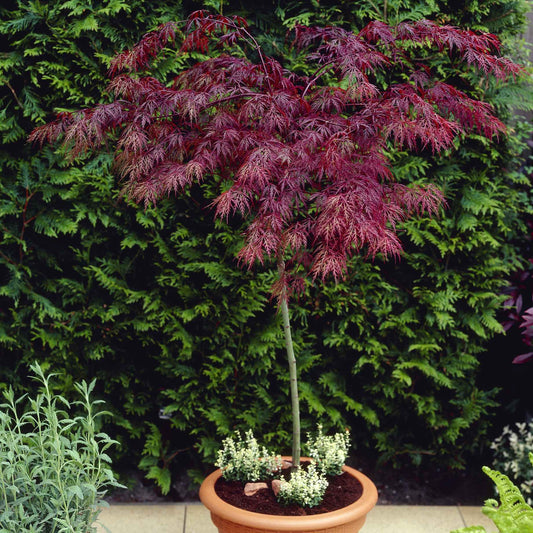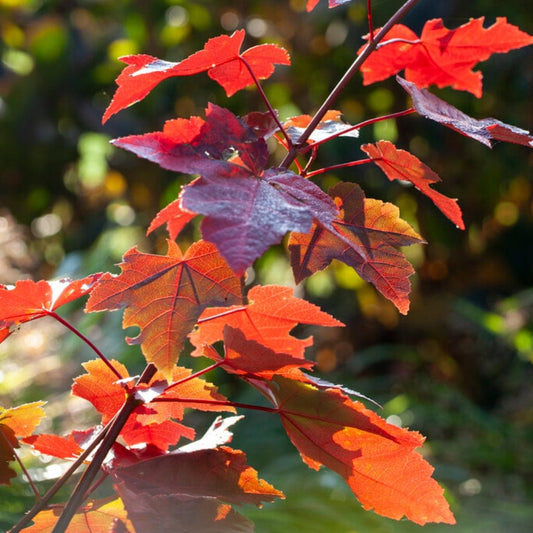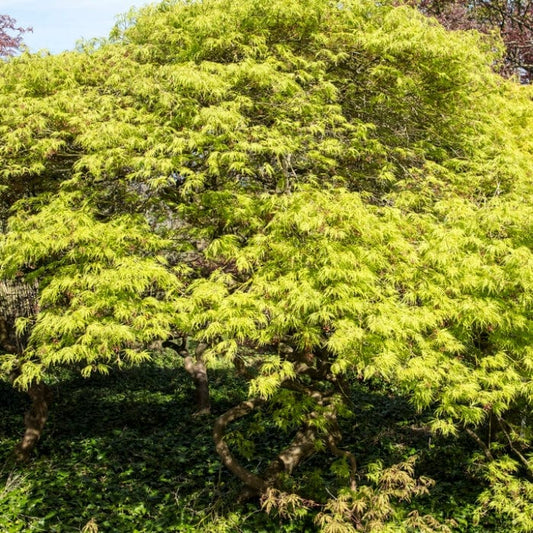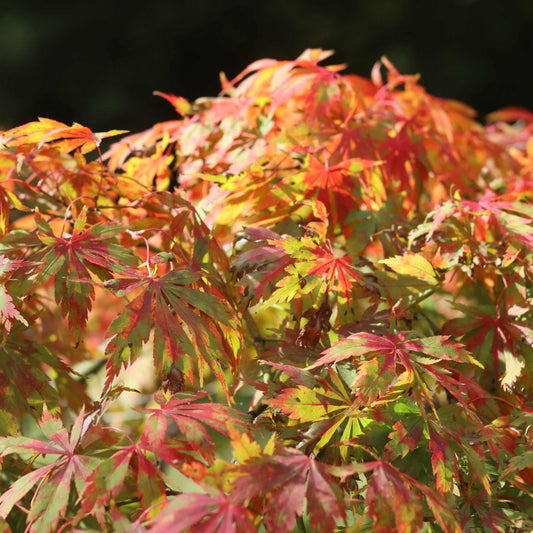What are the Best Acer Trees to Grow in the UK?
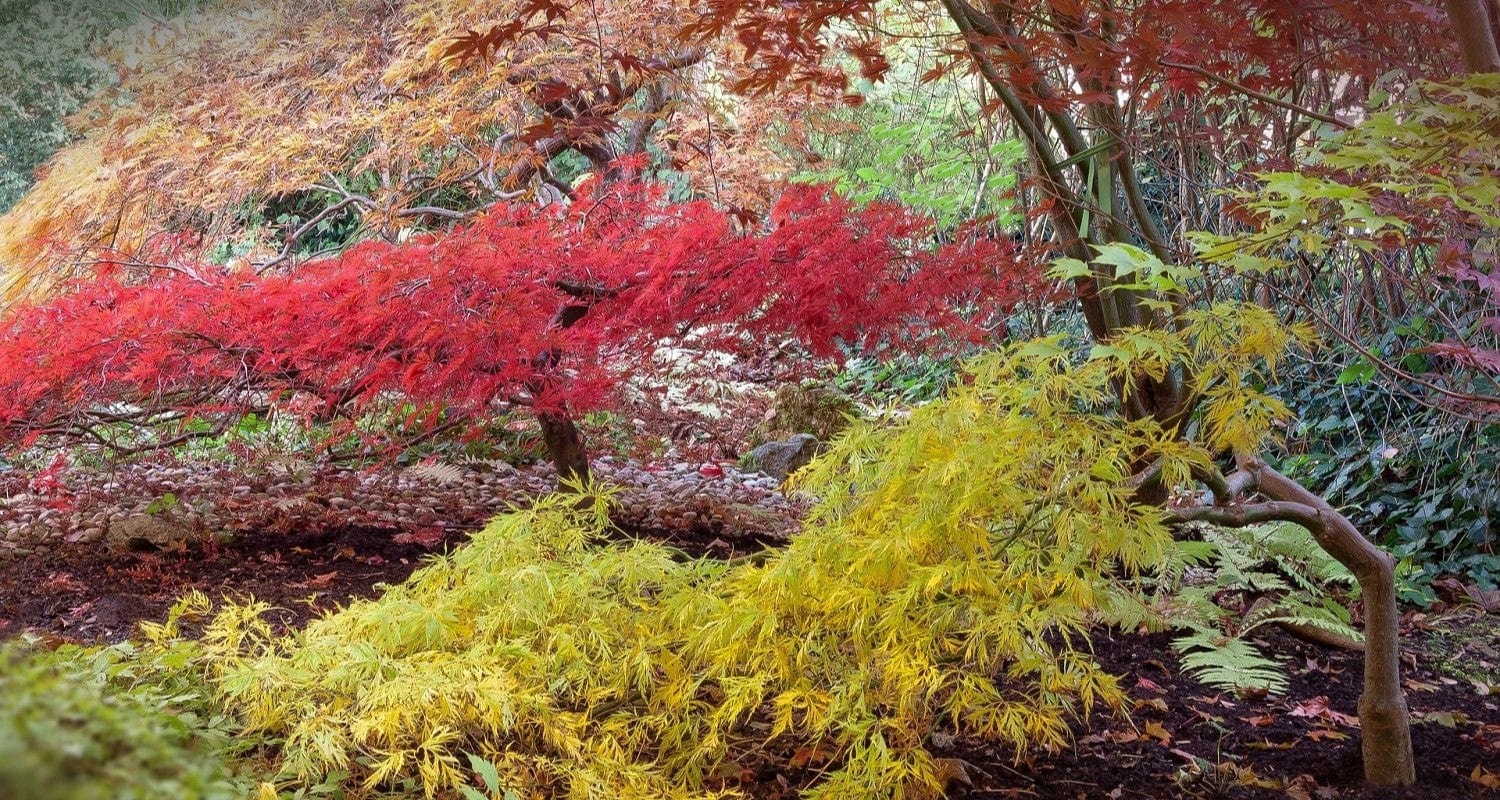
Acers - Japanese and Canadian maples - are some of the most recognisable and popular garden trees, with distinctive five- or seven-pointed leaves and a neatly-spreading form. Naturally well-shaped and slow-growing, they have some of the brightest foliage and best autumn colour around and are easy to grow.
Each variety has something uniquely beautiful about it, whether it’s decorative bark, ruby red foliage, incredible autumn colour or variegated leaves. Many of them are also suitable for growing in pots. In this post, we've delved into the best acers for various settings and situations, and we guarantee there'll be an acer that's right for you.
Jump to:
- Best acer for small gardens
- Best large acer
- Best acer for pots
- Best acer for autumn colour
- Best acer for decorative bark
- Best variegated acer
- How to get the most from your acer
What is the best acer for small gardens?
Acer palmatum ‘Red Emperor’
Most Acer palmatum varieties grow to a compact height (typically 5m or less) and will thrive in a small garden - one of the best of these is Acer palmatum ‘Red Emperor’. As well as having some of the brightest and best red foliage you’ll see, 'Red Emperor' grows to a neat and manageable 5x4m within 20 years, but can be pruned to fit any garden.
Its distinctive, five-pointed leaves emerge wine-red in spring, turning bright scarlet in autumn. Even in the hottest summers the leaf colour won’t fade. Plant it in a border, as a feature tree in a front lawn or even in a large container.
What is the best large acer?
Acer platanoides 'Drummondii'
If you have a large garden, Acer platanoides 'Drummondii' makes a wonderful feature tree. It’ll eventually grow to a height of 12m unless pruned, retaining a well-shaped open crown as it matures. The foliage is variegated, with a bright green centre and a cream coloured edge, turning to golden yellow and warm orange tones in autumn.
Although it’s a Norway maple, this popular tree was bred at the Drummond Nursery in Scotland in 1903. It’s very hardy and pollution-resistant, loves being in clay soil and can tolerate the odd bit of waterlogging in winter. Another great option for a medium to large space would be a Canadian maple like Acer rubrum 'Fairview Flame' - these varieties can reach 20m!
What is the best acer for pots?
Acer palmatum ‘Garnet’
Acer palmatum trees are perfect for containers, being slow-growing, naturally compact and neatly-shaped. Award-winning Acer palmatum 'Garnet' is one of the best, with leaves that emerge in the same orange-red tones as the gemstone, hold their colour all through summer and turn fully red in autumn. This gracefully weeping acer won’t grow any bigger than 2.5x3m and can be kept much smaller.
Potted acers look great in pairs or small groups; similarly-sized varieties include Acer palmatum 'Katsura' (3x3.5m) and Acer palmatum 'Dissectum' (2x2.5m). Plant them with tree or shrub compost in containers that drain well and are at least twice the size of the root ball or the pot your tree came in, repotting them every few years as necessary. Trees grown in pots will need more regular feeding and watering than those in the ground.
What is the best acer for autumn colour?
Acer rubrum ‘Fairview Flame’
All acer trees are impressively-coloured in autumn, but it’s the reds that seem to be in most demand. If this sounds like you, go for Acer rubrum 'Fairview Flame', which has the most vivid scarlet leaves of any variety and a classically-shaped pyramidal crown. In spring, its leaves emerge with a red tint, turning fully dark green in summer before reverting to red.
The leaves are slightly translucent, giving them a stained glass effect when the autumn sun shines through them. 'Fairview Flame' is a large tree, however, so for a smaller garden we’d recommend Acer palmatum 'Dissectum' as an alternative. This low-growing acer’s autumn display is a glowing palette of oranges, reds and yellows and it won’t grow taller than 2.5m.
What is the best acer for decorative bark?
Acer griseum (Paperbark Maple)
If you’re looking for a true four-season tree which attracts attention even in winter, acers fit the bill. Several of them have decorative coloured, textured or tactile bark, including Acer davidii, known as the Snake Bark Maple or 'Viper' Acer due to its eye-catching silver-grey and green snake print pattern, and Acer palmatum 'Sangokaku', or Coral Bark Maple, which brightens the winter landscape with its coral-red branches.
The most tactile is the award-winning Paperbark Maple or Acer griseum, with luminous, cinnamon-toned, peeling bark and deep green foliage that turns red and orange in autumn. Adding a sensory dimension to your garden, a layer of old bark peels off like paper each year, revealing the new orange-red bark beneath.
Unlike some of the other peeling bark tree species, Paperbark Maple is suitable for even a small garden, being so slow-growing that you may not ever see its mature height of up to 10m as they live for an average of 100 years!
What is the best variegated acer?
Acer palmatum ‘Shirazz’
Colourful variegated acers really work hard for their place in your garden, and none more so than Acer palmatum 'Shirazz'. This spectacular tree’s foliage starts off magenta with a bright pink edge in spring, matures to grey-green with pink and cream margins in summer and turns to a spectrum of brilliant reds and purples in autumn.
'Shirazz' is a truly eye-catching tree that works well as the focal point of a border or as a specimen tree in your lawn. Like all variegated acers, it prefers a partially shaded position and may need some of its new shoots pruning out if they come in green rather than variegated. This variety grows to a very neat 5x4m - it also works well trained as a half standard in a container.
How do you get the best from your acer?
1. Position
Acers prefer a sandy, slightly acidic soil but will grow in any soil as long as it has good drainage and doesn’t get waterlogged. They do best in a sheltered position (wind could blow the delicate leaves off the tree). If you have a red acer, plant it in a sunny spot with at least 4-6 hours of light daily - morning sunlight is best but your tree can deal with a little afternoon shade.
Variegated acers do best in light shade, as do varieties with golden coloured leaves. Acers have shallow roots so it’s best to avoid planting other plants too close to your tree as they’ll be competing with it for water and nutrients.
2. Pruning
Acers are slow growing and well formed trees so if all goes well, you can usually swerve the pruning. If you need to remove dead, damaged or crossing branches, however, or want to shape your tree, make sure you do it while the tree is dormant (between November and March, and preferably before the end of January) to avoid it bleeding sap. Check out our complete guide to pruning acers for all you need to know.
3. Feeding
When planting your acer, mix plenty of compost into the planting hole to give the young tree a nutrient boost. Your acer will then appreciate an annual light mulch of compost, manure or bark chips in spring.
4. Watering
Water your tree in thoroughly when planting, and then every other day for the first few months. By the time the tree is a year old, it should have established a strong root system and will only need watering in hot, dry weather. Acers in pots will need more watering than those in the ground - if the top couple of centimetres of soil is dry, you should water your tree.
Final thoughts
Hopefully, having read this, you'll have an idea about which acer is best for you. While you're here, make sure to check out our complete acer tree care guide. In it, you'll find everything you need to know to keep your acer happy and healthy.
Last updated: 17/09/2025


